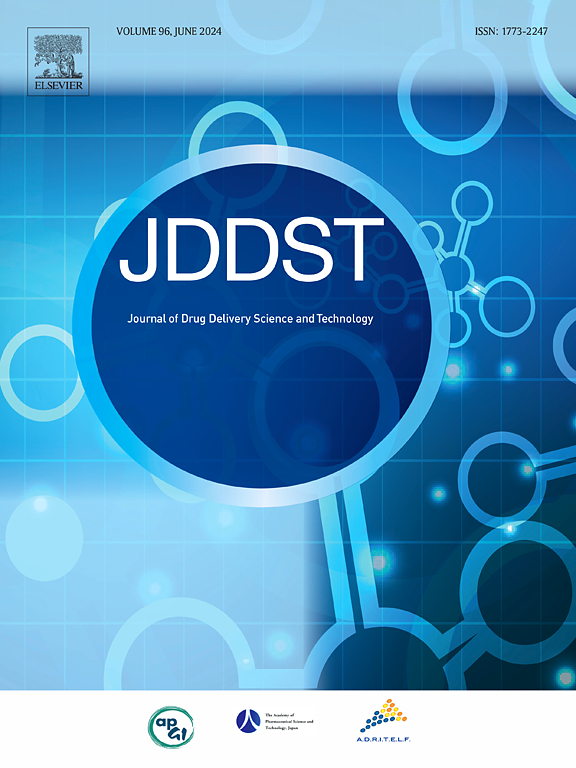Nose to brain delivery of insulin loaded in PLGA and chitosan-coated PLGA nanoparticles: A promising approach for Alzheimer's disease therapy
IF 4.5
3区 医学
Q1 PHARMACOLOGY & PHARMACY
Journal of Drug Delivery Science and Technology
Pub Date : 2025-04-03
DOI:10.1016/j.jddst.2025.106857
引用次数: 0
Abstract
Alzheimer's disease is considered one of the most common leading causes of death worldwide. Recent evidence shows that intranasal delivery of insulin can serve as a significant pharmacological therapy for Alzheimer's disease due to a direct nose-to-brain connection. To tackle the challenges of nose-to-brain drug delivery, the current study investigated the use of PLGA nanoparticles (NPs) and mucoadhesive chitosan-coated PLGA NPs (PLGA/chit). The effect of NPs on insulin permeability on sheep nasal mucosa showed that PLGA and PLGA/chit NPs led to a 4-fold and 16-fold increase in comparison to insulin solution, respectively. Moreover, the findings showed that the formulation of NPs enhanced the area under the curve (AUC) of insulin in the brain compared to the insulin solution. The results demonstrate that the presence of a chitosan coating on the NPs resulted in a notable increase in brain concentration compared to NPs without the coating (p < 0.01). The sustained release of insulin from the NPs, particularly those coated with chitosan, led to a reduction in plasma concentration and mitigated the systemic adverse effects of insulin.
In summary, the results suggest that intranasal administration of NPs, particularly mucoadhesive NPs, has the potential to enhance the delivery of insulin to the brain.

求助全文
约1分钟内获得全文
求助全文
来源期刊
CiteScore
8.00
自引率
8.00%
发文量
879
审稿时长
94 days
期刊介绍:
The Journal of Drug Delivery Science and Technology is an international journal devoted to drug delivery and pharmaceutical technology. The journal covers all innovative aspects of all pharmaceutical dosage forms and the most advanced research on controlled release, bioavailability and drug absorption, nanomedicines, gene delivery, tissue engineering, etc. Hot topics, related to manufacturing processes and quality control, are also welcomed.

 求助内容:
求助内容: 应助结果提醒方式:
应助结果提醒方式:


